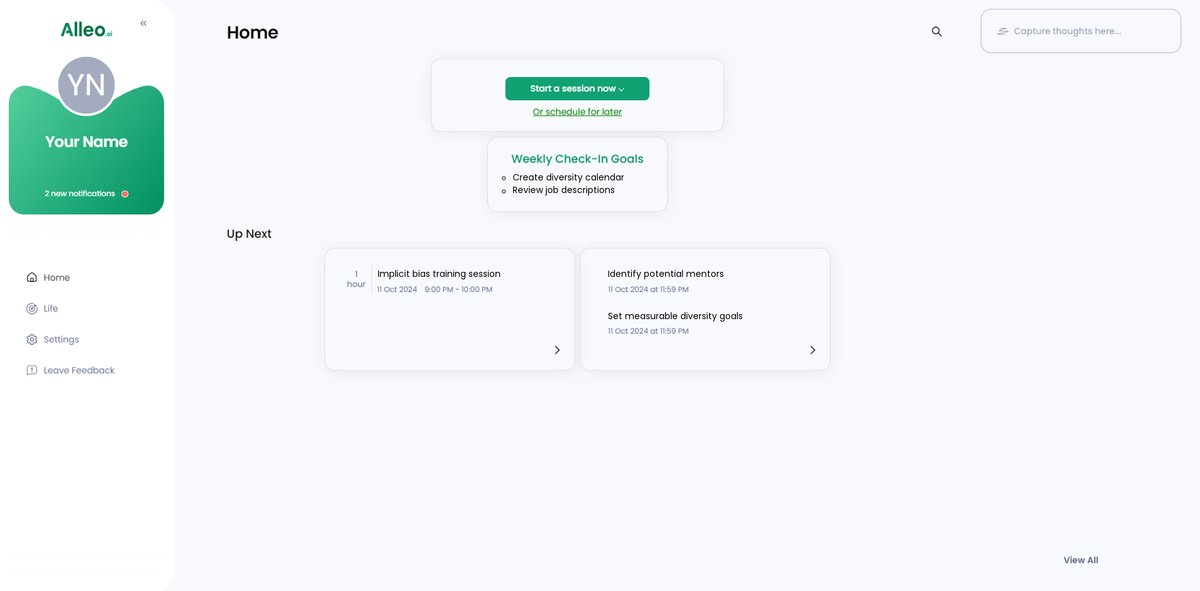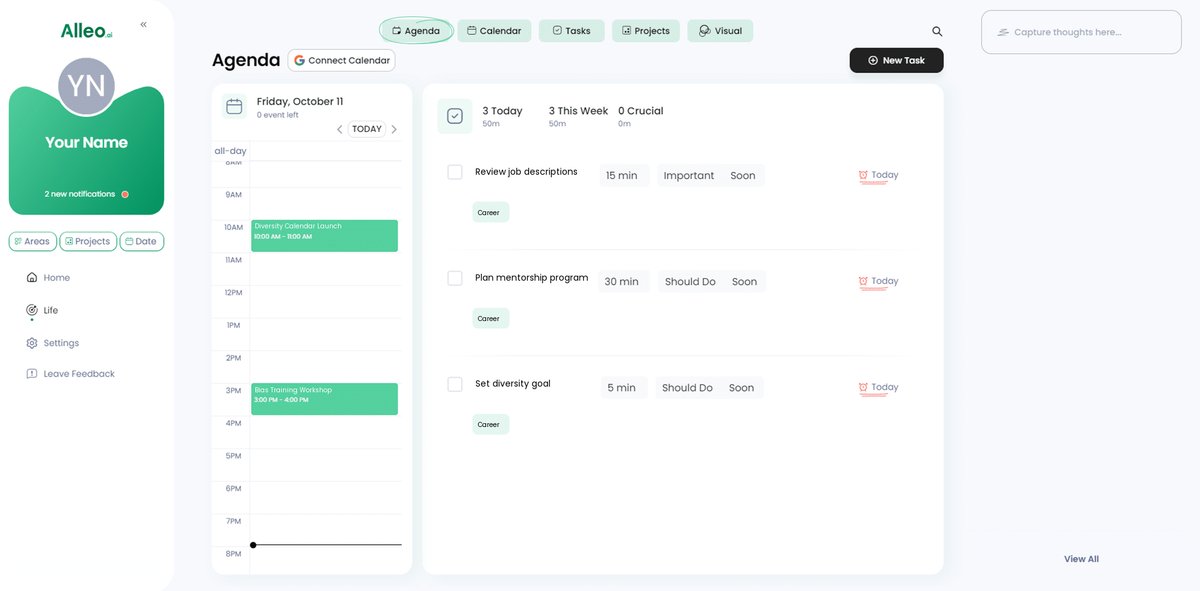How to Increase Diversity Awareness: 7 Strategies for HR Professionals to Transform Workplace Culture
What if you could prevent conflicts and missed opportunities in your workplace by increasing diversity awareness? Implementing strategies for increasing workplace diversity awareness can lead to a more inclusive and productive environment.
As an HR professional, understanding the critical role of diversity can transform your organization’s culture and success. Diversity training for HR and developing cultural competence in human resources are key components of this process.
In this post, you’ll discover practical strategies to boost diversity awareness and create a more inclusive environment. We will explore actionable steps like implementing a diversity calendar, conducting regular unconscious bias in recruitment training, and establishing mentorship programs. These workplace diversity initiatives can significantly impact your organization’s inclusive hiring practices and equal opportunity employment strategies.
Let’s dive in and explore how increasing workplace diversity awareness can positively transform your organization.

The Diversity Dilemma: Why It Matters
Many workplaces today still lack true diversity. This isn’t just a missed opportunity; it’s a significant risk for organizations not focused on increasing workplace diversity awareness.
Without proactive measures and inclusive hiring practices, diversity issues can quickly escalate into conflicts.
HR professionals often see the consequences of neglecting diversity awareness. High-profile cases, like public scandals or lawsuits, highlight these issues but don’t address the day-to-day struggles in cultural competence in human resources.
When we ignore diversity, we miss out on innovation and broader perspectives. This isn’t just a theory; it’s a reality that affects productivity and morale, underscoring the importance of workplace diversity initiatives.
Several clients report that initial resistance to diversity initiatives leads to long-term problems. Addressing these challenges early through diversity training for HR can transform an organization’s culture and success, including the development of inclusive leadership and effective diversity and inclusion policy creation.

Strategic Roadmap to Increasing Diversity Awareness
Overcoming this challenge requires a few key steps. Here are the main areas to focus on to make progress in increasing workplace diversity awareness:
- Implement Diversity Calendar for Awareness Events: Create and promote a comprehensive calendar of diversity events to support workplace diversity initiatives.
- Conduct Regular Implicit Bias Training Sessions: Schedule and update engaging training sessions to address unconscious bias in recruitment and foster inclusive leadership development.
- Create Diverse Interview Panels for Hiring: Ensure diverse representation in interview panels to enhance inclusive hiring practices.
- Establish Mentorship Programs for Underrepresented Groups: Develop structured mentorship programs as part of equal opportunity employment strategies.
- Use Inclusive Language in Job Descriptions: Revise job descriptions for inclusivity, supporting diversity and inclusion policy creation.
- Set Measurable Diversity Goals and Track Progress: Define and monitor diversity metrics for HR to gauge the success of workplace diversity initiatives.
- Organize Cultural Competence Workshops for HR Staff: Conduct workshops to enhance cultural competence in human resources and improve diversity training for HR professionals.
Let’s dive in!
1: Implement diversity calendar for awareness events
Creating a diversity calendar is crucial for increasing workplace diversity awareness and promoting inclusivity.
Actionable Steps:
- Compile a diversity calendar featuring key events such as Race Equality Week, International Women’s Day, and Pride Month to support workplace diversity initiatives.
- Promote these events via newsletters, intranet, and social media. Use engaging content like stories and interviews to enhance cultural competence in human resources.
- Organize internal activities to celebrate these days, encouraging participation with incentives or recognition as part of inclusive leadership development.
Explanation:
These steps matter because they foster continuous engagement and awareness within your organization. By celebrating diverse events, you promote a culture of inclusion and respect, supporting equal opportunity employment strategies.
This proactive approach aligns with industry trends and can significantly improve workplace culture. For more detailed event ideas, check out this comprehensive calendar.
Key benefits of implementing a diversity calendar:
- Increases cultural awareness among employees, addressing unconscious bias in recruitment
- Promotes inclusivity and respect in the workplace, supporting diversity and inclusion policy creation
- Provides opportunities for team building and engagement, similar to employee resource groups
Implementing a diversity calendar sets a solid foundation for broader diversity initiatives and diversity training for HR professionals.

2: Conduct regular implicit bias training sessions
Regular implicit bias training is essential for fostering an inclusive workplace and increasing workplace diversity awareness.
Actionable Steps:
- Schedule quarterly training sessions for all employees. Use engaging formats such as interactive workshops and e-learning modules to enhance cultural competence in human resources.
- Partner with DEI consultants to ensure high-quality training. Regularly update the training content based on feedback and new research on workplace diversity initiatives.
- Incorporate follow-up activities to reinforce learning. Use reflective exercises, group discussions, and practical applications to address unconscious bias in recruitment.
Explanation:
These steps matter because they help employees recognize and address their biases, leading to a more equitable workplace and supporting inclusive hiring practices.
Regular training keeps the topic top of mind and demonstrates the company’s commitment to diversity and inclusion policy creation.
For more insights on effective bias training, visit this resource.
Implementing these training sessions will pave the way for a more inclusive and respectful work environment, supporting equal opportunity employment strategies.

3: Create diverse interview panels for hiring
Diverse interview panels are crucial for ensuring fair and unbiased hiring processes, contributing to increasing workplace diversity awareness.
Actionable Steps:
- Establish a policy to include diverse members on every interview panel. Ensure representation from different genders, races, and backgrounds, promoting inclusive hiring practices.
- Provide training for panel members on unbiased interviewing techniques. Include topics like implicit bias, cultural competence in human resources, and equitable evaluation to address unconscious bias in recruitment.
- Regularly review and adjust the interview process based on feedback. Use data and diversity metrics for HR to track the diversity of candidates and outcomes.
Explanation:
These steps matter because they help create a more equitable hiring process, which in turn promotes a diverse and inclusive workplace, aligning with workplace diversity initiatives.
Diverse panels bring varied perspectives and reduce the likelihood of biased decisions. For more insights on effective interview practices and equal opportunity employment strategies, check out this resource.
Creating diverse interview panels is a proactive approach to foster inclusivity and fairness in hiring practices, supporting diversity and inclusion policy creation.

4: Establish mentorship programs for underrepresented groups
Mentorship programs are crucial for supporting the growth and development of underrepresented groups within your organization, contributing to increasing workplace diversity awareness.
Actionable Steps:
- Identify potential mentors and mentees within your organization. Focus on underrepresented groups such as women, minorities, and LGBTQ+ employees, aligning with inclusive hiring practices.
- Develop a structured mentorship program with clear goals and timelines. Provide training and resources for both mentors and mentees, enhancing cultural competence in human resources.
- Monitor and evaluate the program’s effectiveness regularly. Collect feedback from participants and make necessary improvements, utilizing diversity metrics for HR.
Explanation:
These steps matter because mentorship can significantly improve career progression and job satisfaction for underrepresented employees, supporting workplace diversity initiatives.
By creating structured programs, you ensure that all participants have a clear path to success. This proactive approach aligns with industry trends and has been shown to enhance workplace diversity and inclusion, addressing unconscious bias in recruitment.
To learn more about effective mentorship strategies, you can explore this resource.
Key components of successful mentorship programs:
- Clear objectives and expectations for both mentors and mentees
- Regular check-ins and progress evaluations
- Opportunities for reverse mentoring to promote mutual learning and inclusive leadership development
Establishing mentorship programs will help foster a supportive and inclusive organizational culture, contributing to diversity and inclusion policy creation and equal opportunity employment strategies.

5: Use inclusive language in job descriptions
Using inclusive language in job descriptions is essential to attract a diverse pool of candidates and increase workplace diversity awareness.
Actionable Steps:
- Review and revise all job descriptions for inclusive language. Avoid gendered terms and biased phrases that might deter diverse candidates, supporting inclusive hiring practices.
- Use tools and resources to check for inclusivity. Implement software or platforms that analyze job descriptions for bias, addressing unconscious bias in recruitment.
- Get feedback from diverse employees on job descriptions. Make adjustments based on their insights and recommendations, fostering cultural competence in human resources.
Explanation:
These steps matter because inclusive language ensures that job descriptions appeal to a broad audience, encouraging applications from diverse candidates and supporting workplace diversity initiatives.
This approach aligns with current industry trends and best practices. By continually refining your job descriptions, you can foster a more inclusive hiring process and contribute to equal opportunity employment strategies.
For more on the importance of inclusive language, visit this resource.
Adopting inclusive language in job descriptions can significantly improve your recruitment outcomes and support increasing workplace diversity awareness.

6: Set measurable diversity goals and track progress
Setting measurable diversity goals and tracking progress is vital for increasing workplace diversity awareness and ensuring your diversity initiatives are effective and impactful.
Actionable Steps:
- Define clear, specific diversity goals for the organization. Examples include increasing the percentage of underrepresented groups in leadership roles by 15% within a year, aligning with inclusive hiring practices.
- Use data analytics to track progress towards these goals. Regularly publish reports and updates to maintain transparency and accountability, focusing on diversity metrics for HR.
- Adjust strategies based on data insights and changing needs. Be flexible and responsive to ensure continuous improvement in workplace diversity initiatives.
Explanation:
These steps matter because they create a structured approach to diversity initiatives, making it easier to identify areas for improvement and celebrate successes in cultural competence in human resources.
Regularly tracking and adjusting your strategies based on data ensures that your efforts are aligned with industry trends and organizational goals. For more detailed guidance on setting and achieving diversity goals, visit this resource.
Achieving measurable diversity goals will help create a more inclusive and successful workplace, supporting equal opportunity employment strategies and increasing workplace diversity awareness.

7: Organize cultural competence workshops for HR staff
Organizing cultural competence workshops is essential for fostering an inclusive and respectful workplace while increasing workplace diversity awareness.
Actionable Steps:
- Schedule regular workshops focusing on cultural competence. Include topics like cultural sensitivity, cross-cultural communication, and inclusive hiring practices.
- Invite experts and guest speakers to provide diverse perspectives. Ensure a variety of voices and experiences are represented in diversity training for HR.
- Implement practical exercises and role-playing scenarios. Encourage active participation and real-world application of skills learned, addressing unconscious bias in recruitment.
Explanation:
These steps matter because they equip HR professionals with the skills needed to navigate and celebrate diversity, promoting a more inclusive culture and increasing workplace diversity awareness.
Regular workshops reinforce the importance of cultural competence in human resources and provide ongoing learning opportunities.
To explore how cultural competence can enhance workplace success, visit this resource.
Key outcomes of cultural competence workshops:
- Enhanced understanding of diverse cultures and perspectives
- Improved communication skills across cultural boundaries
- Development of strategies for creating an inclusive work environment and implementing workplace diversity initiatives
Organizing these workshops helps build a foundation of understanding and respect in your organization, supporting equal opportunity employment strategies.

Partner with Alleo to Enhance Diversity Awareness
We’ve explored the challenges of increasing workplace diversity awareness and the steps to achieve it. But did you know you can work directly with Alleo to make this journey easier and faster?
With Alleo, you can set up an account and create a personalized diversity plan for inclusive hiring practices and cultural competence in human resources. Alleo’s AI coach will guide you through each step, offering tailored coaching sessions on workplace diversity initiatives just like a human coach.
Plus, you’ll get a free 14-day trial with no credit card required.
Alleo will help you schedule diversity events and training sessions for HR. The coach will follow up on your progress, handle changes, and keep you accountable via text and push notifications, supporting your efforts in increasing workplace diversity awareness.
Ready to get started for free?
Let me show you how!
Step 1: Log In or Create Your Account
To start your diversity awareness journey with Alleo, simply Log in to your account or create a new one to access our AI coach and personalized diversity plan tools.

Step 2: Choose Your Diversity Goal
Select “Setting and achieving personal or professional goals” to focus on your specific diversity objectives, aligning with the strategies outlined in the article to create a more inclusive workplace.

Step 3: Select “Career” as Your Focus Area
Choose “Career” as your focus area in Alleo to align your diversity awareness efforts with your professional growth and workplace culture improvement goals. This selection will tailor the AI coach’s guidance to help you implement the diversity strategies discussed in the article, such as creating inclusive job descriptions and establishing mentorship programs.

Step 4: Starting a Coaching Session
Begin your diversity journey with an intake session, where Alleo’s AI coach will help you create a personalized plan to boost diversity awareness in your workplace.

Step 5: Viewing and managing goals after the session
After your coaching session, check the Alleo app’s home page to view and manage the diversity goals you discussed, allowing you to track your progress and stay accountable to your organization’s diversity initiatives.

Step 6: Adding events to your calendar or app
Use the Alleo app to add diversity events and training sessions to your calendar, allowing you to easily track your progress in implementing diversity initiatives and solving workplace inclusion challenges.

Bringing It All Together: Your Path to Diversity Awareness
Taking these steps can transform your workplace. Every action you take towards increasing workplace diversity awareness counts.
Remember, diversity is about celebrating every individual. It’s a journey, not a destination, much like developing cultural competence in human resources.
You have the tools and strategies to make a difference. Start with small changes and build on them, such as implementing inclusive hiring practices.
For more support, Alleo is here to help. Our AI coach can guide you every step of the way in creating workplace diversity initiatives.
With Alleo, you can set and achieve your diversity goals, including developing diversity metrics for HR. The best part? You can try it for free.
Let’s create a more inclusive workplace together. You’ve got this!